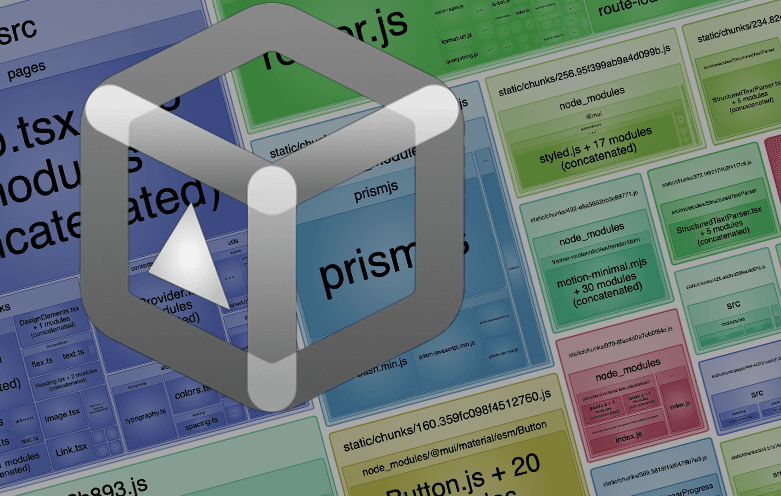Reducing your NextJS javascript bundle size with the bundle analyzer
An optimized NextJS plugin


It's difficult to know precisely what the final bundle output will look like or where you might have some inefficient code.
Luckily, the NextJS framework provides a quick and easy tool that you can set up to analyze your JS bundle and get an overview of your application.
As with any node package, step one is to install it with your preferred package manager.
bash# with yarn yarn add @next/bundle-analyzer -D # with npm npm install @next/bundle-analyzer --save-dev
We then need to define it in our next.config.js file. Or, if you don't currently have a next.config.js you need to make one at the root of your project directory, then define it.
javascript// next.config.js const withBundleAnalyzer = require('@next/bundle-analyzer')({ enabled: process.env.ANALYZE === 'true', });
The env variable will be used when we run the build (and to create a script in our package.json.) And finally, we add it to our exports. This will depend on your current config setup.
javascriptmodule.exports = withBundleAnalyzer({});
javascript// next.config.js module.exports = withBundleAnalyzer({ images: { domains: ['www.datocms-assets.com'], }, });
To run our freshly installed bundle analyzer we simple need to use the command
bash# with yarn ANALYZE=true yarn build # with npm ANALYZE=true npm run build
Assigning an env varies if you are using a Windows operating system. With Powershell it's $env:ANALYZE=true and with CMD (no longer maintained) it's set ANALYZE=true.
Personally, at this time, I would also set it up as a script in my package.json
json// package.json scripts": { ... "build": "next build", "analyze": "ANALYZE=true yarn build" ... },
After running the script (and your app successfully builds) your browser will open up to three windows.
The client-side bundle analysis
The server-side bundle analysis
The edge bundle analysis
They will all look like some variation of these


Using this data we can now
See what is REALLY inside our bundle
Find out what modules are taking up the most space
See if we have any modules being added by accident
Now that we have set up the analysis portion, the real heavy lifting begins! Optimization!
I don't currently have an in-depth article explaining some of the ways to reduce your bundle size or split your code. But I can recommend one until I do.
Here, Adrian Bece writes a fantastic piece on improving your bundle performance with code-splitting on Smashing Magazine. Until I can get an in-depth article, I hope you can get everything you need from there.
Above all, I hope this was useful to someone out there. If it was, feel free to let me know. Or if you see something wrong, I love feedback. Reach out, and let's chat.